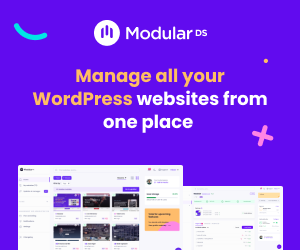In this article:
WordPress multisite networks are powerful tools that allow organizations to manage multiple websites from a single WordPress installation. However, this convenience comes with unique security challenges and audit requirements. This article dives deep into the essentials of auditing and securing WordPress multisite networks, tailored specifically for IT auditors, cybersecurity specialists, and network administrators.
Key points covered in this guide include
- Understanding the architecture and benefits of WordPress multisite networks
- Specialized IT audit procedures for multisite environments
- Comprehensive security assessment techniques
- Risk management and compliance mapping
- Best practices for ongoing multisite security
- Common troubleshooting scenarios and solutions
- Recommended tools and real-world case studies
WordPress Multisite Networks
WordPress Multisite is a feature that allows you to run multiple websites from a single WordPress installation. Instead of managing separate WordPress setups for each site, multisite lets you control all sites centrally, sharing themes, plugins, and users.
Unlike a single WordPress site, where each installation is isolated, multisite networks share the same core files and database but keep content and settings separate per site. This setup is ideal for organizations needing to manage many sites efficiently.
Some benefits include easier maintenance, centralized updates, and unified user management. However, multisite networks also introduce challenges such as complex permission management, increased risk exposure if one site is compromised, and more complicated backups.
Industries like education, franchises, media companies, and government agencies often rely on multisite networks to manage their web presence at scale.
The architecture typically consists of a single WordPress core installation, a shared database with tables segmented per site, and a network admin dashboard that oversees all sites.
Common multisite configurations include
- Subdomains sites.example.com
- Subdirectories example.com/site1
- Domain mapping custom domains pointed to individual sites within the network
Each configuration has security implications and audit considerations, especially around SSL certificates and DNS management.

The Role of IT Audit in WordPress Multisite Environments
IT audit in the context of WordPress multisite networks is a systematic evaluation of the network’s security, compliance, and operational integrity. The goal is to identify vulnerabilities, ensure controls are effective, and verify adherence to organizational policies and regulatory standards.
Multisite networks require specialized audit procedures because their shared infrastructure means a single vulnerability can impact multiple sites. Auditors must consider network-wide risks and site-specific issues simultaneously.
Frameworks like NIST Cybersecurity Framework, ISO 27001, and SOC 2 provide guidelines for conducting thorough audits. These frameworks emphasize risk assessment, control evaluation, and continuous monitoring.
Key audit areas include
- Security protecting against unauthorized access and malware
- Compliance meeting legal and regulatory requirements
- Performance ensuring the network runs efficiently without bottlenecks
- Data Integrity verifying that data is accurate and protected from corruption
Auditing multisite networks supports risk management by highlighting weaknesses and enabling governance teams to implement corrective actions.

Preparing for a WordPress Multisite Audit
Preparation is critical for an effective audit. Start with a pre-audit checklist that includes
- Defining the audit scope—decide which sites and components to include
- Identifying stakeholders such as network admins, developers, and compliance officers
- Gathering documentation: network architecture diagrams, user role lists, plugin and theme inventories, hosting environment details
- Selecting tools like security scanners (e.g., WPScan), log analyzers, and vulnerability assessment software
- Setting clear audit objectives aligned with organizational policies and compliance mandates
Having this groundwork ensures the audit proceeds smoothly and covers all relevant areas.
Comprehensive Security Assessment of WordPress Multisite Networks
Core System Review
Begin by verifying the WordPress core version across the network. Running outdated versions exposes the network to known vulnerabilities. Ensure all sites are updated promptly.
 How to perform a WordPress audit after a plugin vulnerability disclosure
How to perform a WordPress audit after a plugin vulnerability disclosureCheck the security of the wp-config.php file, which contains sensitive database credentials and keys. It should have strict file permissions (typically 400 or 440) to prevent unauthorized access.
Disable file editing through the WordPress admin dashboard by setting define('DISALLOW_FILE_EDIT', true); in the config file. This prevents attackers from modifying files if they gain admin access.
Perform manual inspections of core files to detect unauthorized changes or malicious code injections. Tools like diff or version control can assist in spotting anomalies.
Themes and Plugins Audit
Inventory all themes and plugins, both active and inactive, across the multisite network. Unused or outdated components increase the attack surface.
Check for plugins and themes that are no longer maintained or have known vulnerabilities. Remove or replace these promptly.
Use child themes to customize appearance without modifying core theme files, preserving update compatibility and security.
Regularly update all themes and plugins to their latest secure versions. Automate updates where possible but test on staging environments first.
User Roles and Permissions Review
Map all user roles across the network and individual sites. Multisite networks have a complex hierarchy including super admins, site admins, editors, and subscribers.
Identify inactive or unauthorized users and remove or disable their accounts to reduce risk.
Enforce the principle of least privilege by assigning users only the permissions necessary for their roles. Avoid granting super admin rights unless absolutely required.
Review password policies to ensure strong, unique passwords are used. Implement two-factor authentication (2FA) network-wide to add an extra security layer.
Network Configuration and Settings Analysis
Evaluate multisite network settings for security best practices. Check that domain mapping is correctly configured and SSL/TLS certificates are valid and enforced on all sites.
Audit file and directory permissions to ensure they follow WordPress recommendations (e.g., 755 for directories, 644 for files).
Verify PHP and web server versions are up to date and hardened against common exploits.
Disable unnecessary PHP functions and modules that could be exploited.
Database Security and Integrity Checks
Scan the database for malware signatures and suspicious entries such as unauthorized admin users or injected scripts.
Review database user permissions to ensure only necessary access is granted. Avoid using root or superuser accounts for WordPress database connections.
Disable remote database access unless strictly necessary to minimize exposure.
Log and Audit Trail Analysis
Ensure comprehensive logging of user activities, login attempts, and system events. Logs are critical for detecting suspicious behavior and forensic analysis.
Review logs regularly for anomalies such as repeated failed logins or unexpected changes.
 How to audit and manage WordPress user roles and capabilities
How to audit and manage WordPress user roles and capabilitiesUse audit trail plugins like WP Security Audit Log to monitor changes in real time and receive alerts.
Malware and Vulnerability Scanning
Employ security plugins designed for multisite environments, such as Wordfence or Sucuri, to scan for malware and vulnerabilities network-wide.
Conduct blacklist checks to ensure none of the sites are flagged by search engines or security services.
Integrate Web Application Firewalls (WAF) and Intrusion Detection Systems (IDS) to block malicious traffic and detect attacks early.
Backup and Recovery Procedures Review
Assess backup frequency and scope, ensuring both files and databases are included.
Verify that backups are stored securely offsite or in encrypted storage.
Test restoration procedures regularly to confirm backups can be used to recover quickly after incidents.
Risk Management and Compliance in WordPress Multisite Audits
Identify risks specific to multisite networks, such as cross-site contamination, privilege escalation, and centralized failure points.
Map audit findings to relevant compliance standards like HIPAA for healthcare, GDPR for data privacy, and PCI DSS for payment security.
Develop risk mitigation strategies including patch management, access controls, and incident response plans.
Document audit results clearly, highlighting critical vulnerabilities and recommended actions.
Establish continuous monitoring and schedule periodic reassessments to maintain security posture.
Best Practices for Securing WordPress Multisite Networks
Enforce network-wide security policies covering password complexity, user roles, and plugin usage.
Automate updates for WordPress core, themes, and plugins to reduce exposure to known vulnerabilities.
Implement strong authentication methods including 2FA and limit login attempts.
Use security plugins optimized for multisite, ensuring they support network-wide scanning and alerts.
Conduct regular vulnerability assessments and penetration tests to uncover hidden weaknesses.
Educate users and administrators on security best practices and phishing awareness.
Optimize performance with caching and CDN solutions, as slow sites can be more vulnerable to attacks.
Troubleshooting Common Security Issues in WordPress Multisite
Domain mapping errors often arise from DNS misconfigurations or SSL certificate mismatches. Verify DNS records and ensure SSL is properly installed for all mapped domains.
Plugin conflicts can cause unexpected behavior or security gaps. Isolate problematic plugins by deactivating them one by one and checking site functionality.
Suspicious user activity such as unexpected logins or content changes should trigger immediate investigation and possible password resets.
Performance bottlenecks may indicate underlying security issues like brute force attacks or malware. Use monitoring tools to identify and address these.
After a security incident, isolate affected sites, restore from clean backups, and conduct a thorough audit to prevent recurrence.
Tools and Resources for Auditing and Securing WordPress Multisite
| Tool | Purpose | Usability | Notes | Approximate Cost |
|---|---|---|---|---|
| WPScan | Vulnerability scanner | Command-line, technical | Free & paid versions | Free / Paid tiers |
| Wordfence | Security plugin with firewall & malware scan | User-friendly dashboard | Supports multisite | Free / Premium |
| WP Security Audit Log | Audit trail and activity logging | Easy to configure | Real-time alerts | Free / Premium |
| Sucuri | Malware scanning & WAF | Cloud-based, simple UI | Comprehensive protection | Paid plans |
| ManageWP | Centralized updates & backups | Intuitive interface | Supports multisite management | Free / Paid add-ons |
Additionally, hosting providers often offer security tools and monitoring services tailored for WordPress multisite environments. External penetration testing services can provide an unbiased security evaluation.
Practical Tips for Auditing and Securing WordPress Multisite Networks
Core System Security
- Keep WordPress core updated network-wide to avoid vulnerabilities.
-
Secure
wp-config.phpwith strict file permissions (400 or 440). -
Disable file editing in dashboard:
define('DISALLOW_FILE_EDIT', true); - Manually inspect core files for unauthorized changes regularly.
Themes & Plugins Management
- Inventory all active and inactive themes/plugins; remove unused ones.
- Replace outdated or vulnerable plugins/themes promptly.
- Use child themes to customize without altering core files.
- Automate updates but test on staging before network-wide deployment.
User Roles & Permissions
- Map and review all user roles across the network regularly.
- Remove inactive or unauthorized users to reduce attack surface.
- Apply least privilege principle; limit super admin rights strictly.
- Enforce strong passwords and enable two-factor authentication (2FA) network-wide.
Network & Database Security
- Ensure SSL/TLS certificates are valid and enforced on all sites.
- Audit file and directory permissions (755 for folders, 644 for files).
- Keep PHP and web server versions updated and disable unnecessary functions.
- Restrict database user permissions; disable remote access unless needed.
Monitoring & Incident Response
- Enable comprehensive logging of user activity and system events.
- Use audit trail plugins like WP Security Audit Log for real-time alerts.
- Employ malware scanners and firewalls (Wordfence, Sucuri) network-wide.
- Isolate affected sites and restore from clean backups after incidents.
Best Practices & Maintenance
- Automate updates for core, themes, and plugins with staging tests.
- Educate users on security awareness and phishing prevention.
- Optimize performance with caching and CDN to reduce attack risks.
- Schedule regular audits and vulnerability assessments.
Case Studies and Real-World Examples
Consider a medium-sized educational institution managing 50 sites via WordPress multisite. An audit revealed outdated plugins on 30% of sites, weak password policies, and missing SSL on some subdomains. After remediation, the institution reduced security incidents by 70% and improved compliance with FERPA regulations.
In another example, a franchise network with 200 sites experienced a malware outbreak due to a vulnerable plugin. A comprehensive audit identified the breach source, and network-wide updates and stricter user role enforcement prevented further damage.
These cases highlight the importance of regular audits and proactive security management in multisite networks.
Opinions and Insights from IT Professionals and Security Experts
“Auditing WordPress multisite networks is challenging due to their complexity, but focusing on user roles and plugin hygiene makes a huge difference.” – Jane D., Cybersecurity Analyst
“Two-factor authentication across the network is a game changer. It drastically reduces unauthorized access risks.” – Mark T., IT Auditor
“Regular backups and tested recovery plans are often overlooked but critical for operational continuity.” – Lisa K., Network Administrator
Discussions on forums like Reddit’s r/Wordpress and professional groups emphasize the need for automated tools and continuous monitoring to keep multisite networks secure.
WordPress Multisite Security Audit Focus Areas
Core System Review
- Update WordPress core promptly
- Secure wp-config.php file permissions
- Disable file editing in dashboard
- Manual core file inspections
Themes & Plugins Audit
- Inventory all active/inactive components
- Remove outdated or vulnerable plugins
- Use child themes for customization
- Automate and test updates
User Roles & Permissions
- Map all user roles network-wide
- Remove inactive/unauthorized users
- Enforce least privilege principle
- Implement 2FA and strong passwords
Network Configuration
- Validate domain mapping & SSL
- Audit file & directory permissions
- Update PHP & web server versions
- Disable unnecessary PHP functions
Database Security
- Scan for malware & suspicious entries
- Review database user permissions
- Disable remote DB access if possible
Logs & Audit Trails
- Comprehensive logging of user activity
- Regular log review for anomalies
- Use real-time audit plugins
Malware & Vulnerability Scanning
- Use multisite-compatible security plugins
- Conduct blacklist checks
- Integrate WAF & IDS systems
Backup & Recovery
- Regular backups of files & databases
- Secure offsite/encrypted storage
- Test restoration procedures frequently
Common Mistakes and Practical Tips for WordPress Multisite Audits
One frequent mistake is neglecting inactive users and unused plugins, which can become attack vectors. Always clean up regularly.
Another error is failing to enforce strong password policies and multi-factor authentication, leaving the network vulnerable to credential theft.
Auditors sometimes overlook the importance of database security, which can harbor hidden threats if not properly managed.
Tip: Use staging environments to test updates and changes before applying them network-wide.
Balance security measures with usability to avoid frustrating users and causing workarounds that undermine controls.
Summary and Key Takeaways
- WordPress multisite networks offer centralized management but require specialized audit and security approaches.
- Comprehensive audits cover core system, themes/plugins, user roles, network settings, database, logs, malware, and backups.
- Risk management and compliance mapping ensure audit findings translate into actionable controls.
- Best practices include automated updates, strong authentication, security plugins, user education, and performance optimization.
- Regular troubleshooting and incident response plans are essential for maintaining security.
- Use specialized tools and external services to enhance audit effectiveness.
- Learn from real-world cases and expert insights to continuously improve security posture.
References and Further Reading
- How WordPress Multisite Works – Sanders Design
- WP-Ensure + WordPress Multisite
- WordPress Multisite: A comprehensive guide to setup and management
- Reddit discussion on WordPress multisite maintenance
- Comprehensive WordPress Site Security Audit – Malcure
- How to properly host and manage 200 WordPress sites – Reddit
- Mastering Domain Mapping in WordPress Multisite
- WordPress Security Guide – Sucuri
- WP Security Audit Log Plugin
Frequently Asked Questions (FAQ)
What is the difference between WordPress multisite and single site in terms of security?
WordPress multisite shares a single core installation and database, so a vulnerability in one site can affect the entire network. Single sites are isolated, so risks are contained. Multisite requires centralized security controls and more complex user permission management.
How often should I audit my WordPress multisite network?
Audits should be conducted at least quarterly, with additional reviews after major updates, plugin installations, or security incidents to ensure ongoing protection.
What are the best plugins for multisite security auditing?
Plugins like Wordfence, WP Security Audit Log, and Sucuri are popular choices that support multisite environments and provide comprehensive scanning, logging, and firewall features.
How can I manage user roles effectively across multiple sites?
Use the network admin dashboard to review and assign roles carefully. Enforce least privilege, remove inactive users, and consider role-based access control (RBAC) plugins to streamline management.
What steps should I take immediately after detecting a security breach?
Isolate the affected site(s), reset passwords, scan for malware, restore from clean backups if necessary, and conduct a full audit to identify and close vulnerabilities.
What do you think about auditing WordPress multisite networks? Have you faced challenges securing your multisite environment? How would you improve your current audit process? Share your thoughts, questions, or experiences in the comments below!











